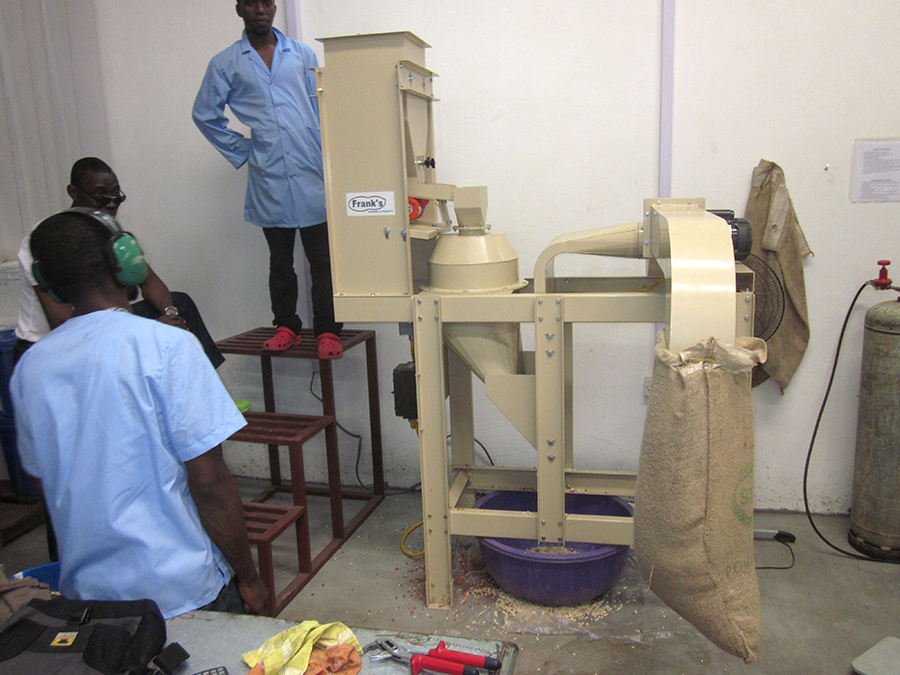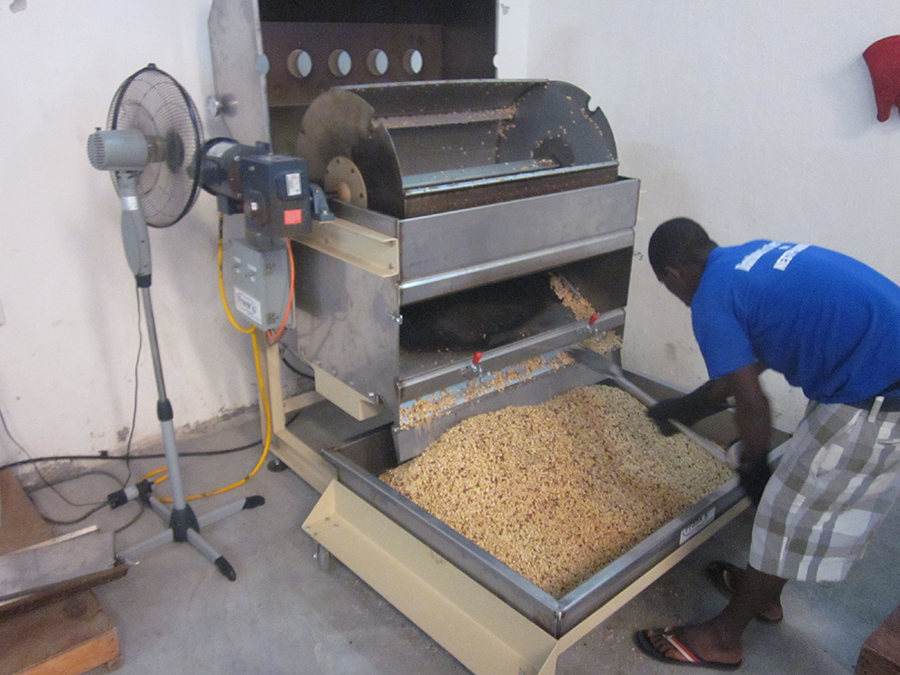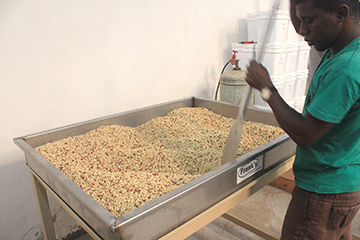Frank traveled to Sierra Leone and helped a team there set up a small sorting and roasting facility for Project Peanut Butter, a non-profit that makes Ready to Use Therapeutic Food (RUTF)
The facility needed:

The splitter/blancher is used to split kernels and remove the skins. This process is done after the nuts have been white roasted or dried down to between 4.5% and 5% moisture. This process exposes any inner damage in nuts, which can then be sorted out, reducing the chance that nuts high in aflatoxin remain in the batch.

The finish roaster performs the final roasting process before nuts are used as snacks or to make peanut butter. A panel in the simple drum is removed for nuts to be placed inside. After roasting is complete, nuts fall by gravity onto a cooling table top, which is placed on the cooling table base while the next batch of nuts go into the roaster.

A cooling table allows roasted peanuts to cool after they are roasted in a finishing roaster. A stainless-steel pan is placed onto a dolly, rolled under the finishing roaster to be filled and then lifted onto the cooling table frame where air is pulled through from the top. This allows the hot exhaust air to be blown outside through a wall.